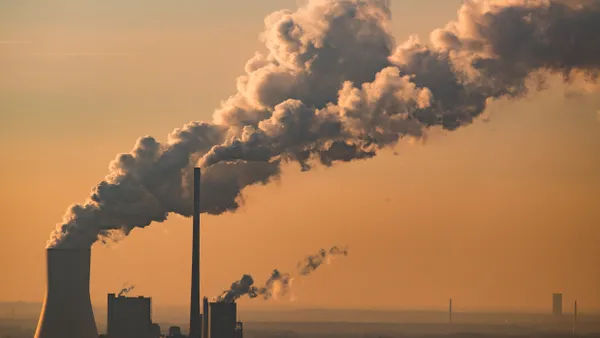Dive Brief:
- Formula 1 reduced its carbon footprint by 13% in its 2022 racing season, compared to a 2018 baseline, the racing body announced in its first sustainability report released Tuesday. The company said the emissions reduction put it “on track” to achieve its net-zero status goal for 2030.
- The international racing corporation said it was able to cut emissions in the 2022 season despite upping the number of races it held since the report’s 2018 benchmark year. F1 attributed the reduction to an increase in the use of renewable energy to power its factories and facilities and a shift to remote operations, which curbed travel.
- The company’s 2022 carbon footprint amounted to 223,031 tons of carbon dioxide equivalent — inclusive of scope 1, 2 and 3 emissions — out of which the majority (49%) came from logistics, followed by business travel (29%), event operations (12%), factories and facilities (10%) and car fuel (which made up less than 1%).
Dive Insight:
F1 first unveiled its sustainability strategy in 2019 with goals to reach net-zero status by the end of this decade and to create a more diverse and inclusive sport.
F1 established these targets based on the Intergovernmental Panel on Climate Change and its definition of net-zero emissions, in addition to guidance from the Greenhouse Gas Protocol. Since setting these goals, the sport has prioritized cutting its emissions in categories such as travel, logistics and energy use at factories and events before turning to carbon offsets, according to the report.
“Sustainability is one of the most important factors to us not only as a sport, but as a business,” F1 CEO and President Stefano Domenicali said in a press release. “It is no longer enough for us to simply deliver great action and wheel-to-wheel racing on the track, we need to ensure that we are doing so in a sustainable way so our sport can thrive long into the future.”
To achieve its climate-based target, the company said it changed how it operates to slash absolute carbon emissions by 50%, compared to a 2018 baseline. F1 said it aims to shift its race cars to 100% sustainable fuel use by 2026, a goal it is halfway to achieving, as cars that competed in the F2 and F3 junior series in the 2023 season used 55% advanced sustainable fuel. The F2 and F3 series aim to have competitors use 100% sustainable fuel by 2027.
Apart from utilizing only sustainable fuels, F1 said it is also focused on reducing the carbon footprint of the production, manufacturing and transportation processes involved in making the fuel. The racing body said it aims to reduce the footprint of those operations by 80% by establishing production requirements, such as use of renewable energy. Further, the company said the fuel would be created from a mixture of non-food biological and waste sources, or carbon extracted from the air. F1 said these changes would bring about a “dramatic reduction” in emissions while maintaining the same horsepower as fuel being used before.
To address the staggering amount of emissions released from its travel and logistics sector, which the company said was a “key driver of [its] footprint,” F1 said it focused on three key areas in 2023: reducing the amount of kits and people that travel, making modifications to the mode of travel and decreasing the distance traveled. The company also said it had made amendments to its 2024 calendar to better streamline freight movement between racing events in order to reduce the distance traveled in between.
In terms of its diversity and inclusivity goals, the racing corporation launched an F1 Academy last year — an all-female driver series with the aim of “increasing opportunities for female participation in motorsport,” a historically male-dominated sport. F1 also said it focused on increasing access for underrepresented groups to early career and driver development programs, ranging from its offices and local communities to the racing track.











